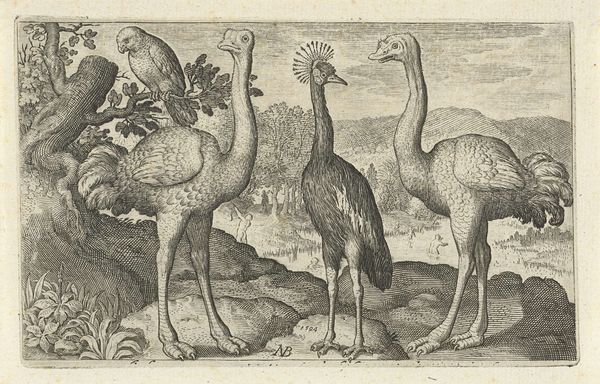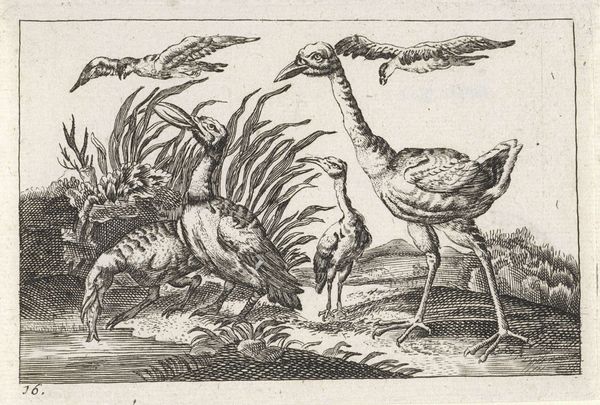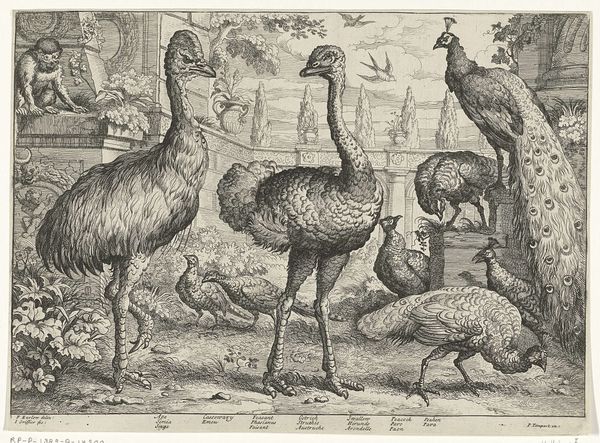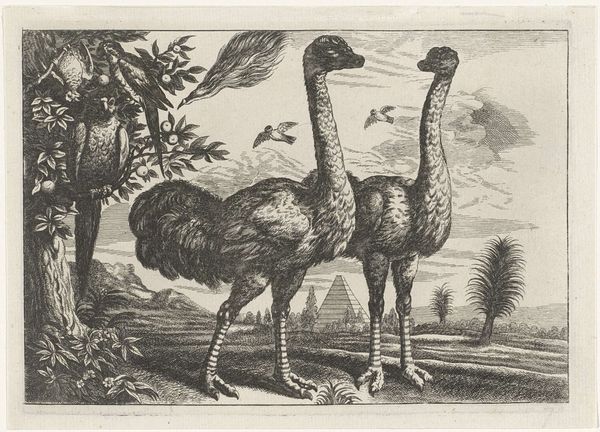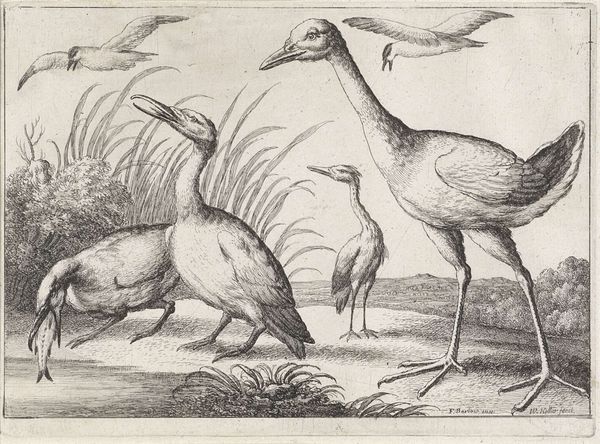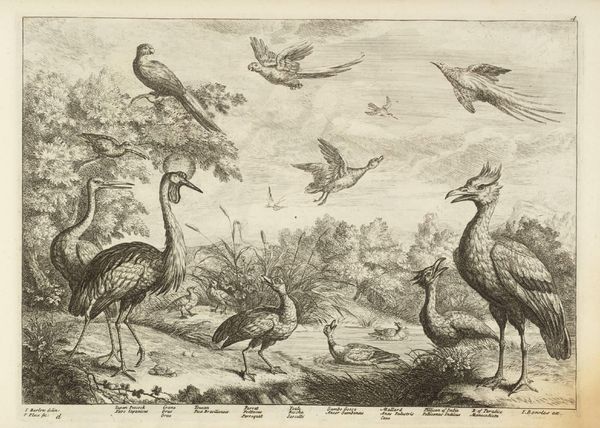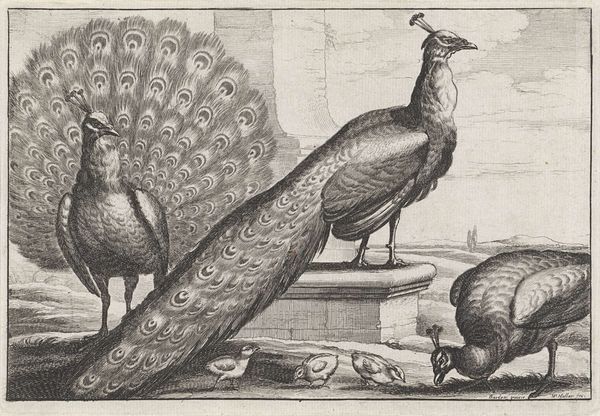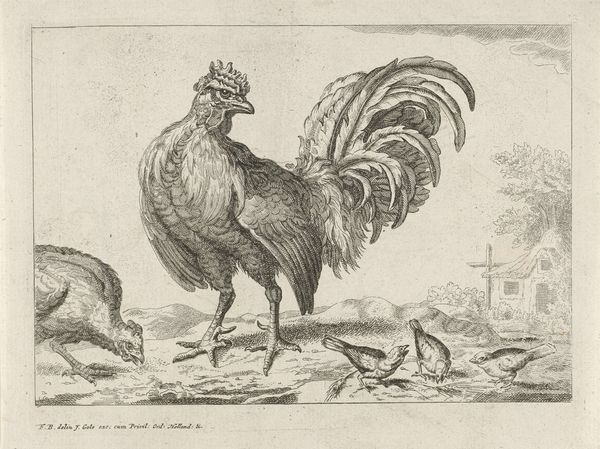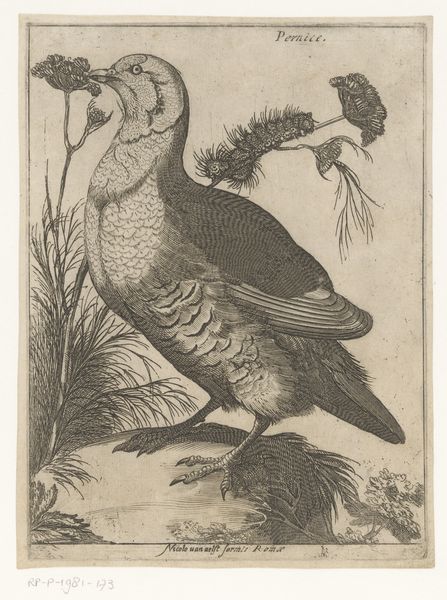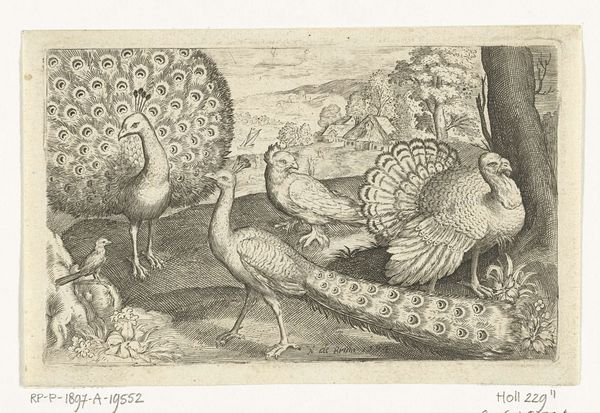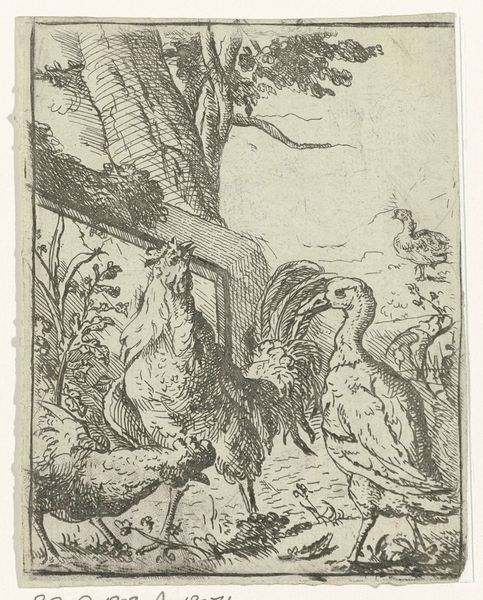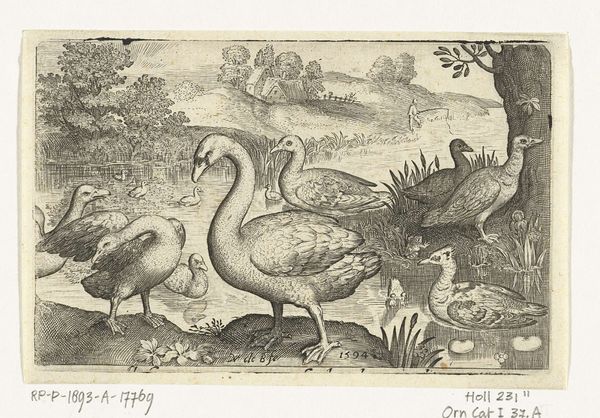
print, etching, engraving
#
baroque
# print
#
etching
#
landscape
#
engraving
Dimensions: height 300 mm, width 360 mm
Copyright: Rijks Museum: Open Domain
Editor: Here we have Peter Casteels III’s "Ostrich and Turkeys in a Garden with Antique Ruins," an etching and engraving created sometime between 1708 and 1749. The scale of the ostrich compared to the turkeys is striking! How do you approach interpreting this piece? Curator: From a materialist perspective, the combination of etching and engraving is interesting. We see a tension between techniques accessible to a wider artisan base, etching, with the more exclusive domain of engraving, which demanded higher skill. Was this combination a deliberate choice by Casteels, reflecting the evolving market for prints and artistic labor practices of the time? Editor: So, the *making* of it reveals something. Curator: Precisely! Look at the detail of the ostrich feathers achieved through the meticulous process of engraving versus the simpler, more fluid lines used for the ruins. What does this imply about the artist’s skill but also about his intentions? Is he trying to blur the lines between fine art and skilled craft, and who might have consumed these images? Editor: That’s fascinating! I hadn’t considered the consumer. These images were products of their time, responding to demands. The image itself almost presents labor… Curator: Good observation. We also see the classical ruins—signifying a high artistic concept alongside rather ordinary fowl—domesticated, commodified… How does this context shift your interpretation? Editor: It pushes me to consider what value meant then; class and craft existing in what would have been the exotic fowl itself as a purchased specimen. Thanks, it changes everything.
Comments
No comments
Be the first to comment and join the conversation on the ultimate creative platform.

